I’ve already said my piece on the year 1994 here. It was of course the year of PULP FICTION, which rewrote the rules of independent filmmaking and exhibition, and also Bela Tarr’s SATANTANGO, which had a similar impact on the international arthouse scene, as well as HOOP DREAMS, which inadvertently initiated the reality TV craze. It was, in short, an auspicious year for movies, even if ‘94’s big hits—which in addition to PULP included TRUE LIES, THE LION KING, FORREST GUMP and DISCLOSURE—generally left something to be desired. Luckily I’ll be concentrating here on thirty lesser-known films, which provide a plethora of genre-spanning quality cinema!
30. 1000 ROSES [1000 ROSEN]
This Dutch import, which has become a favorite of Anti-American minded Europeans, is disappointingly bland for the most part. It does, however, contain a memorable gross-out finale, and, much as I hate to admit it, a definite real-life resonance (meaning the “America sucks” crowd isn’t entirely off-base in its adulation). The subject is a dysfunctional Dutch family and their gardening business. Some sort of disease strikes down the surrounding populace just as an American company, in a not-unfamiliar occurrence, upends everything by taking over the business. Eventually the family members turn on themselves in a vast warehouse with boxes stacked mazelike throughout (the rats-in-a-maze motif is one the film repeats quite often), unleashing a chainsaw, forklift and shotgun on one another.
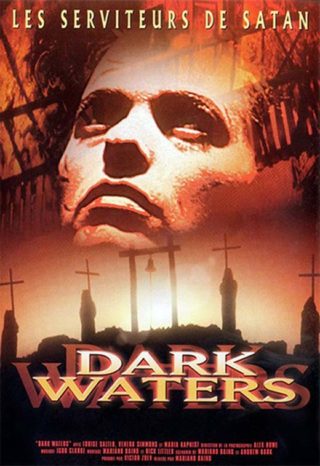 29. DARK WATERS
29. DARK WATERS
A uniquely skilled, atmospheric horror movie that I’ve never quite made peace with. Sure, DARK WATERS contains a wealth of scenic-yet-forbidding seaside locations (shot in war-torn Ukraine) that appear to have been conjured directly from the prose of H.P. Lovecraft, all visualized through authentically stunning photography. The problem is the imagery may be a bit too stunning, being overlit and studied to the point of music video artificiality. And the story, about a woman traveling to a forbidding convent on a secluded island and discovering she has a disturbing connection to a hideous creature who resides there, builds inexorably to a climax that suffers from a seriously hokey looking monster. It’s the only scene where the low budget is really apparent, and conversely the one scene for which the filmmakers really should have saved their money! But there’s a reason this film has endured so long: it weaves a powerfully eerie spell, with a style and outlook that are unique to itself.
28. PALMS [LADONI]
This Russian documentary has been compared to the work of Tarkovsky, and that’s a just comparison given PALMS’ stunning visual imagery and languid, dreamlike aura. An even better comparison would be Werner Herzog, whose grandiose socio-political documentaries seem more in line with the aims of director Artour Aristakisian. His subject is the outcast population of Russia in the early nineties, suffering from blindness, epilepsy, missing limbs and other infirmities, living in makeshift hovels and reduced to begging on the streets for sustenance. All this is presented entirely without sound, with Aristakisian’s impassioned narration filling us in on the lives of these tortured individuals. The black and white visuals are what really make this film the powerful document it is, although their effectiveness may well be accidental; this is to say that the severely grainy and scratched-up film stock actually works in PALMS’S favor, making it look a lot older than it actually is, and so imparting an elemental and historic feel. A sore point is the narration, which (as presented in English subtitled form) is trite and pretentious, constantly parroting clichés about the nobleness of poverty and the evils of “the system.” Another problem is the 2½ hour runtime, which is excessive by any standard.
27. 1-900 [06]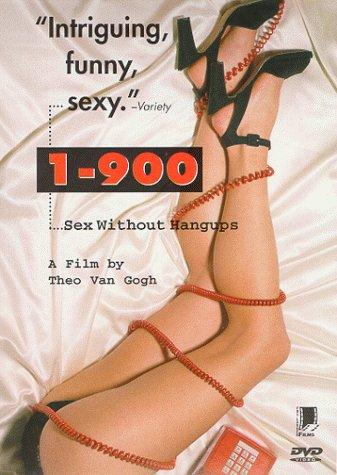
This Dutch import, surely one of the most interesting films made by the late Theo Van Gogh, is based on a play, and it shows. The “story?” Two lonely middle-aged professionals develop a relationship entirely through a 1-900 sex line. At first they’re content masturbating and graphically describing their sexual experiences and fantasies, but inevitably these two begin to long for an encounter outside the phone lines. The film doesn’t really have much to say about modern relationships (although I suspect Van Gogh and writer Johan Doesburg believed otherwise), but taken purely as an erotic drama 1-900 does its job quite adequately, with female lead Ariane Schluter’s many simulated orgasms putting Meg Ryan’s to shame.
26. OLEANNA
A sexual harassment drama, adapted and directed by David Mamet from his controversial play of the same name. Mamet doesn’t do much to elevate the material cinematically—it consists, essentially, of two characters in a room talking for 90 minutes—but the words, thankfully, are powerful enough to stand on their own. We have an obnoxious male college professor and an airheaded woman student who’s come to see him about her bad grades. Their volatile encounter can be interpreted in a number of ways, mostly depending on your gender (which is to say that women tend to view the man as predatory while men see the gal as an oversensitive loon). Mamet is an expert button-pusher, to be sure, and this film is one of the liveliest talkfests ever. He also deserves kudos for having the balls to cast two (then) unknowns, William H. Macy and Debra Eisenstadt, both of whom do first rate work.
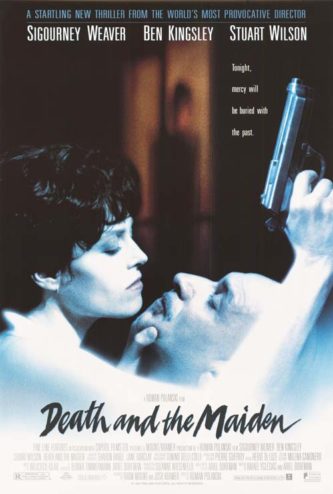 25. DEATH AND THE MAIDEN
25. DEATH AND THE MAIDEN
This isn’t Roman Polanski’s best film, but it is powerful and unsettling in a quintessentially Polanskian manner. Adapted from the popular play by Ariel Dorfman, it stars Sigourney Weaver as a meek woman living in an unidentified South American country where years earlier she was tortured by a sadistic doctor in the service of a fascistic dictatorship. Now she lives in a secluded Cliffside house with hubbie Stuart Wilson (who was the reason for her suffering, as she refused to turn him in to the authorities), where the two are visited one night by a stranded man played by Ben Kingsley. Weaver becomes convinced Kingsley is her torturer, and the fun begins: Kingsley is beaten, tied up and forced into an interrogation at gunpoint, while Wilson futilely attempts to talk his wife down. But is Kingsley really the guy Weaver thinks he is? Polanski employs all his filmmaking skills to render this stage-bound material cinematic, and includes some startlingly perverse touches (such as Weaver stuffing her panties into Kingsley’s mouth and then duct taping it shut). He also coaxes excellent performances out of his three leads, and conjures a profoundly tense, sweaty atmosphere of claustrophobic menace.
24. THE UNDERGROUND BANKER [XIANG GANG QI AN: XI XUE GUI LI WANG]
I’d heard talk of this Hong Kong category III sickie for years, and the experience of finally seeing it (mostly) didn’t disappoint. The first two thirds require a fair amount of patience on the part of the viewer, being a broad (very broad) comedy about a nerd trying to adjust to living next to a reformed serial killer, just as the nerd’s wife turns to prostitution in order to pay off her debt to the eponymous banker. The sex is unusually graphic and sleazy for a Hong Kong production, and there’s also some gore, but it’s not until the final third that the film’s fearsome reputation really becomes evident. It’s here that things go totally bat-shit after the banker’s goons set fire to the protagonist’s apartment, which kills his wife and leaves his young son horribly disfigured. The protagonist grows determined to kill off the goons, a course of action his neighbor is only too happy to join, resulting in a fast-moving, splat-happy blow out.
23. ZAMOK [THE CASTLE]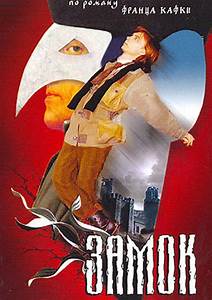
An undeniably impressive adaptation of Franz Kafka’s unfinished novel THE CASTLE by Russia’s late Aleksey Balabanov (OF FREAKS AND MEN, CARGO 200, etc.). It’s very likely the definitive filming of this tale, with a lively and visually compelling treatment that really captures the weirdness of Kafka’s universe. The script follows the novel (as I recall it, anyway) fairly closely, about a man identified only as K. arriving in a snowy village dominated by a castle, where he’s been assigned to be a land surveyor. Unfortunately nobody seems to know about this assignment, and K. spends the movie running around attempting to get some sort of official confirmation, with two bungling assistants in tow. The whole thing has a compellingly burnished lighting scheme, with appropriately harsh, snowy exteriors and an ending that references Kafka’s never-written (but widely described) coda.
22. MAGIC HUNTER [BUVOS VADASZ]
Hungary’s Ildiko Enyedi is one of the most visually imaginative filmmakers on the planet, but her films, I’ve found, aren’t terribly great overall. Her debut feature MY TWENTIETH CENTURY was a visual stunner, but it was also annoyingly episodic and uninvolving. MAGIC HUNTER was her follow-up, and it’s another visually rapturous phantasmagoria, with THE KRAYS’ Martin Kemp as a police sharpshooter who finds his life coming apart after accidentally sniping an innocent woman. Enyedi flashes back and forth between Kemp’s modern-day existence and a band of medieval monks, along with a couple caught in Nazi-occupied Germany and appearances by the devil, the Virgin Mary, time-tripping rabbits and cursed bullets. I’ll always remember my initial viewing of MAGIC HUNTER at the 1994 Vancouver film festival, which was a singularly annoying experience. The film had the absolute worst sound mix I’ve ever suffered through, which made the dialogue (then in English) unintelligible—and which Kemp, who was present at the screening, claimed was intentional on the part of Enyedi. Thankfully that problem has been corrected in the subtitled VHS edition; the film has more than its share of annoyances as it is (Kemp’s sleepwalking performance being the most glaring) without bad sound compounding them!
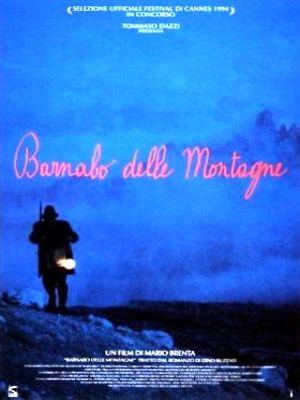 21. BARNABO DELLE MONTAGNE [BARNABO OF THE MOUNTAINS]
21. BARNABO DELLE MONTAGNE [BARNABO OF THE MOUNTAINS]
Certainly one of the premiere mountain movies of all time, an adaptation of Dino Buzzati’s 1933 novella about the title character, an Italian military officer who falls prey to isolation and madness after an act of cowardice. All this is present in the film, but writer-director Mario Brenta’s main interest is in the craggy mountain settings and their outsized relationship with the all-too human protagonist (Marco Pauletti). The drama largely gets lost, as the focus throughout is on the silence and majesty of the scenery. For this reason the film works best on a big screen, where the lack of dramatic tension is less of an annoyance than it is on video/DVD, although Brenta’s visual brilliance registers strongly in any format.
20. FUN
This mean little movie, based on actual events, was one of the premiere entries in the mid-nineties kids-from-Hell film cycle. Told via flashbacks from a mental institution, it focuses on two alienated fifteen-year-old girls who meet at a bus stop one day and, finding an instantaneous rapport, embark on an aimless rampage of destruction that climaxes with the murder of an old lady. Director Rafael Zaelinski, a veteran of no-budget potboilers like SCREWBALLS, coaxes great performances from his lead actresses Alicia Witt and Renee Humphrey, and manages to keep the whole thing lively and colorful without ever compromising the ferocious subject matter. The script refuses to offer easy answers for the girls’ actions; in a subsequent inquisition by a police-appointed psychiatrist (Leslie Hope) both gals claim to have suffered domestic abuse, a fact that by the end is in serious doubt, while their statement that they killed for “fun” likewise rings somewhat hollow (as presented here the murder doesn’t look too enjoyable for any of the participants). Yet Zaelinski’s rendering of the crime and the events leading up to it is utterly—and chillingly—plausible.
19. ROADRACERS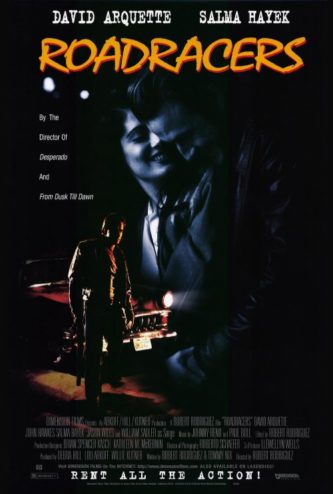
Director Robert Rodriquez’s second and probably best film, a kinetic 1950s set actioner made for Showtime’s short-lived “Drive in Classics” movie series. David Arquette is extremely well cast as a greaser who lives for kicking ass and racing cars. Salma Hayek is his GF, John Hawkes the shithead who’s always on his ass and William Sadler the corrupt cop who has Arquette in his sights. There’s not a whole lot to it, but the music is cool, Salma is hot, and the impeccably staged action comes hard and fast. I also appreciated the tough, cynical ending, which is fully in keeping with the film’s overall tone and attitude.
18. WOYZECK
A version of Georg Buchner’s classic play WOYZECK by Hungary’s Janos Szasz, who lends the material a visual sheen lacking in the better-known adaptation by Werner Herzog. Those visuals, lensed in ultra-stark, contrasty black and white, are imposing and magisterial, accentuating the overpowering bleakness of the narrative. Szasz also provides a distinctly individual spin on the material, about a poverty-stricken man (Lajos Kovacs) driven mad by his slutty wife (Diana Vacaru) and dead-end railroad job, resulting in a winsome double murder. The film favorably recalls the work of Szasz’s fellow countryman Bela Tarr in its artfulness and deliberation, even if it (in common with most of Tarr’s films) is a tad monotonous overall.
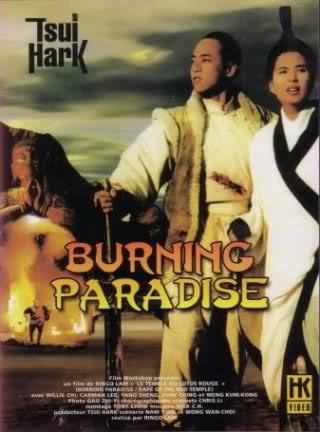 17. BURNING PARADISE [HUO SHAO HONG LIAN SI]
17. BURNING PARADISE [HUO SHAO HONG LIAN SI]
For me this will always be the most satisfying movie made by Hong Kong’s Ringo Lam. It’s an old school actioner in the mold of quite a few classic martial arts flicks, enlivened by Lam’s eye for bleakness and horror. That darkness, I’d argue, detracted from previous Lam efforts like CITY ON FIRE and FULL CONTACT, but actually works in BURNING PARADISE’S favor. It’s one of several Hong Kong movies to feature Fong Sai-Yuk, a Chinese folk hero played here by Willie Chi Tian-sheng, who’s captured as part of a round-up of the disciples of Shaolin. Fong and his fellows are imprisoned in the Red Lotus Temple, a horrific enclosure filled with deadly booby traps and hidden corridors that lead, more often than not, to masses of male corpses and mummified women. Fong and co. end up having to fight their way out of this horror-scape, which naturally entails a lot of large scale ass-kicking and bloodletting, all of it superbly choreographed with an emphasis on pain and suffering. It’s no surprise that where the film falls flat is in its attempts at humor, ordered no doubt by producer Tsui Hark, whose commercial sensibilities are light years removed from Ringo Lam’s relentlessness.
16. LOVE & A .45
One of the best of the Quentin Tarantino wannabes that proliferated in the nineties. It features a white-trash couple (THE SHAWSHANK REDEMPTION’S Gil Bellows and a young Renee Zellweger) who inadvertently become media heroes while on the run from sadistic gangsters. As you’d expect, these characters’ exploits are extremely dialogue heavy and packed with flashy violence, including a torture scene halfway through and a climax that sees the protagonists pointing guns at each other. I’m certain I would have enjoyed it all far more had Tarantino’s early films not existed, but they do, and writer-director C.M. Talkington was clearly familiar with at least one of them. Beyond that, though, LOVE & A .45 is pretty good, with creative camerawork and an atmosphere of mounting lunacy that’s impressively sustained.
15. THE SECRET OF ROAN INISH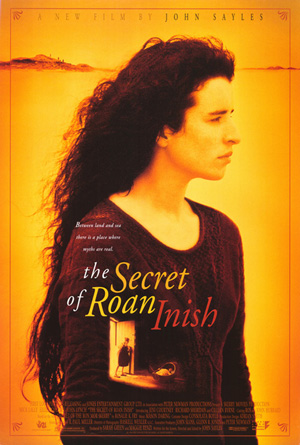
Probably my favorite John Sayles movie. The setting is a small Irish island—this film is very Irish, or at least tries to be—where a little girl (Jeni Courtney) searches for her baby brother who was lost at sea a few years earlier, and discovers that her family harbors some strange secrets (hint: they all seem to involve seals). A charming and highly atmospheric film that hooked me almost immediately, and kept me riveted throughout. The tone of magical realism is in keeping with the best children’s stories, and yet (for once) grown-ups can enjoy this film too.
14. THE MYSTERY OF RAMPO
A strange and often puzzling fantasy about the late Edogawa Rampo, Japan’s foremost horror/mystery scribe. THE MYSTERY OF RAMPO has Rampo (Naoto Takenaka) readying his latest novel, a lurid account of a man whose wife murders him by shutting him up in a chest, for publication, only to learn that the Japanese government has decided to censor it. Yet he reads a newspaper account of a woman suspected of killing her husband in the manner described in his unpublished story. Rampo goes to meet the woman, who looks exactly like his imagined murderess, and enters into a tentative affair with her. At this point Rampo decides to let his fictional alter-ego Akechi (Masahiro Motoki), a dashing detective, take over. The latter is invited into the remote castle where the woman lives with her husband the Marquis, a transvestite with a kinky side… This film suffers from an oft-wobbly, meandering narrative (particularly in the second half) and extremely slack pacing. But it’s also arrestingly weird, and contains a great symphonic score by Akira Senju, performed by the Czech Philharmonic Orchestra.
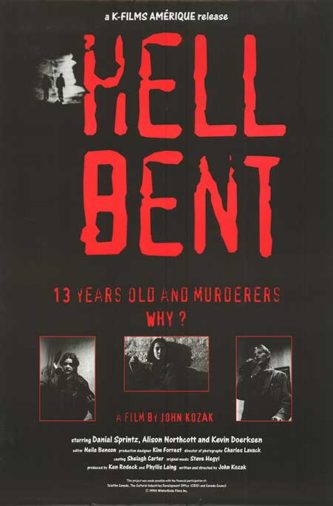 13. HELL BENT
13. HELL BENT
Another unforgiving Canadian take on the misguided youth craze of the nineties that I feel outdoes ‘94’s other such entry (the abovementioned FUN). It features three wayward pre-teens—a rage-fueled boy, his sheepish companion and a vacant-eyed girl—on a destruction rampage in a small town, with the adults powerless to stop them. Eventually the mayhem escalates into B&E and wholesale brutality, with an elderly couple suffering the brunt of the kids’ abuse. The non-professional acting and ultra-low budget seem off-putting at first, but the film has a way of worming its way under the viewer’s skin. Writer-director John Kozak resolutely refrains from moralizing or judgement; we’re never asked to take pity on these kids’ fucked-up lives, and nor is that ever-popular culprit society taken to task, which is in large part what makes HELL BENT such a lacerating experience. It doesn’t sermonize or filter its protagonists’ behavior through a mature perspective—and furthermore, no conventional resolution of any sort is offered.
12. LITTLE ODESSA
A stunning debut by writer-director James Grey, who’s created a stark underworld drama that favorably recalls the best work of Scorsese, Friedkin, Schrader and Penn. An atmosphere of uncompromising honesty and brooding realism is established in the shocking opening, with a superbly cast Tim Roth shooting a man in broad daylight. It turns out that Roth’s a hitman contracted to perform an assassination in the neighborhood he grew up in, where his Russian emigre family—played by Edward Furlong, Vanessa Redgrave and Maximilian Schell—still resides. Throughout, Grey expertly spins a dark drama of love, loyalty and death that thankfully eschews all the posings of independent cinema in the nineties (which is to say that, for once, it’s not Tarantino inspired).
11. AMATEUR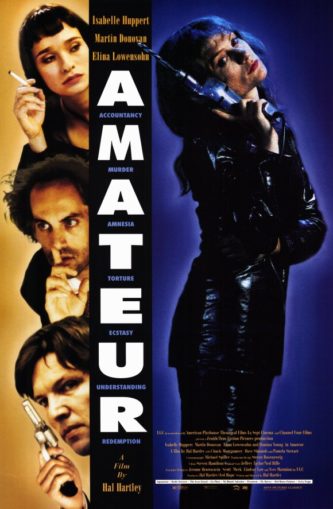
This Hal Hartley production wreaks a quirky Godardian riff on a number of pulp conventions, including an amnesiac caught up in a convoluted plot pivoting around something he did (but can’t remember), a gorgeous woman on the run, an evil hitman and a talisman (here a floppy disk) that everyone wants. The Godardian angle is enhanced by a number of references to the maestro’s films: fans of LE PETIT SOLEDAT will find the torture-by-electrocution scene familiar, while a dying man toward the end staggers an awful lot like a murdered gangster in A BAND APART. There’s also a character named Melville (presumably in reference to LE SAMOURIE director Jean-Pierre) and frequent Godard cast member Isabelle Huppert even turns up. Hartley, however, adds much of his own, most notably a quirky-deadpan style that can be grating (as was the case, I’d argue, in Hartley flicks like SIMPLE MEN and HENRY FOOL) but hits just the right note here.
10. SISTER MY SISTER
A near-flawless British rendition of the crimes of France’s infamous Papin sisters, who back in 1933 brutally murdered their female employer and her daughter while carrying on a torrid incestuous affair. Based on a play by Wendy Kesselman, the Nancy Meckler directed SISTER MY SISTER is a dark and claustrophobic drama that builds tension through the intensity of its performances and the sordidness of its atmosphere. Joely Richardson and Jodhi May are simply GREAT as the incestuous siblings, and Julie Walters is equally fine as the ultra-bitchy Madame who makes their existence a living Hell.
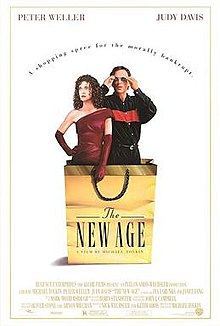 9. THE NEW AGE
9. THE NEW AGE
A terrific film, one of the decade’s smartest, most unique and, sadly, least known comedies. It observes an obnoxious Whoreywood couple, played to perfection by Peter Weller and Judy Davis, trying to cope—poorly—in the midst of an economic freefall. Since these two are such over-privileged assholes they’re not sure how to handle it when they lose their cushy do-nothing jobs; the fun comes in watching them adjust to having to actually work for a living like the rest of us. Writer-director Michael Tolkin, coming off his amazing directorial debut THE RAPTURE, nails the lives of LA’s privileged class with uncanny precision, and Samuel L. Jackson delivers one of his best-ever performances in a small but pivotal role of a slimy telemarketing foreman.
8. THE TIT AND THE MOON [LA TETA Y LA LUNA]
This sexy comedy from Spain’s late Bigas Luna—the third and best entry in a loose-knit trilogy that commenced with JAMON JAMON and GOLDEN BALLS—contains one of the movies’ great untapped resources: actress Mathilda May. Luna claims he cast her because she possesses “the best tits in Europe.” I’m hardly in any position to judge, but I strongly suspect he may be telling the truth; May’s got real charisma, too, which has never been utilized to such great effect. She plays a young French woman who moves with her hubbie (Gerard Darmon) to a beachfront trailer park near the home of a boy (Biel Duran) with a serious Oedipus complex; he’s jealous of his baby brother, since he gets to suckle their mother, but once Mathilda moves in he’s quick to transfer his affections to her. Luna has created a rich, colorful tapestry with quite a few wonderfully quirky characters, from Mathilda’s hubbie, who makes his living farting onstage, to the protagonist’s older brother, who’s in love with Mathilda himself. Luna also lends the film a wonderful touch of Spanish-flavored surrealism, with electric shocks literally passing through lovers’ hands and other such unobtrusive oddness. And of course it’s also got Mathilda May.
7. AGAINST THE WALL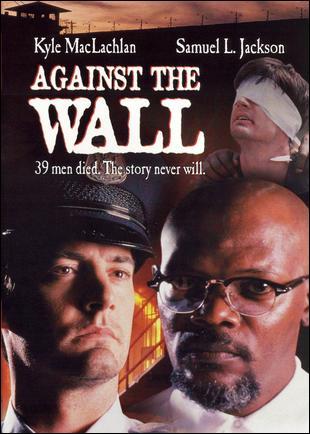
A blistering made-for-HBO look at the Attica prison uprising of the early 1970s, in which the convicts took over the prison for several days until a riot squad was called in, leading to an all-out massacre. The director was the late John Frankenheimer, who proves, not for the first time, that he really knew how to wield a camera and sustain tension. The script by Ron Hutchison, based on the recollections of Michael Smith, an actual prison guard involved in the uprising, is a tad clichéd for my tastes (particularly in the domestic scenes with Smith’s wife Anne Heche, to whom he of course doesn’t pay enough attention), but Frankenheimer’s crackling direction never loses its hold on the viewer. Kyle MacLachlan is excellent as the idealistic Smith, while Samuel L. Jackson and Clarence Williams III are just as fine as the ringleaders of the riot. There’s much brutality on display, all of it presented in unforgivingly naturalistic fashion, and muscular handheld camerawork that, in the inimitable Frankenheimer fashion, expertly meshes fore and background action.
6. ANGEL DUST [ENJERU DASUTO]
Profoundly disturbing, mind expanding stuff directed by Japan’s always-eccentric Sogo Ishii (his first feature, incidentally, since 1984’s CRAZY FAMILY). Here he imparts an ultra-stylish, deliberately paced nightmare about a serial killer who targets commuters on the Tokyo subway system at precisely 6:00 AM each morning. A young female detective (Kaho Minami) is called in to investigate, and finds herself drawn into the twisted world of an ex-lover (Takeshi Wakamatsu) who now runs a “re-brainwashing” clinic for ex-cult members. Is he the killer, or is it one of his patients? And might our seemingly straight-laced heroine have something to do with the killings herself? This is a highly eccentric film that demands an unusual amount of attention from its viewers, but I found it fascinating from start to finish. Ishii’s unnervingly precise, deliberate style is as distinctive as anything by David Lynch, and although the story may seem like it’s composed of spare parts from other sources (such as THE SILENCE OF THE LAMBS and THE MANCHURIAN CANDIDATE), in truth this film is like nothing else.
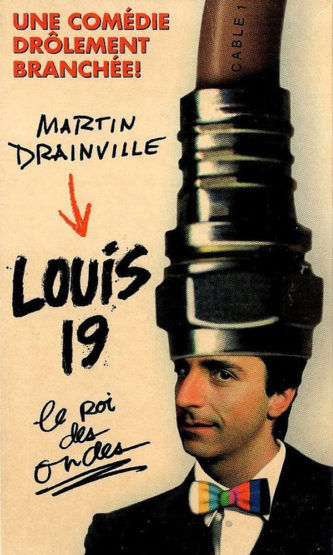 5. LOUIS THE 19th, KING OF THE AIRWAVES [LOUIS 19, LE ROI DES ONDES]
5. LOUIS THE 19th, KING OF THE AIRWAVES [LOUIS 19, LE ROI DES ONDES]
French-Canadian comedy about a thoroughly Average Joe (Martin Drainville) who becomes the star of a reality TV program, with cameras recording his every move. If this premise sounds familiar, that’s probably because you’ve seen ED TV, the 1999 Hollywood remake. That flick was nothing special, and neither is this one, really, although it is damned enjoyable. Take the woman who, disenchanted with Louis, runs up to him with her TV remote, clicking the off button and shouting “take that!” Or the sign on Louis’ bathroom door that reads “Louis will be back in five minutes.” Eventually he falls in love, and decides it’s time to escape the cameras, which he does first by disappearing (leading to a “Find Louis” campaign) and then by performing a makeshift porno flick with his newfound GF. An irresistibly funny and inventive film that holds up remarkably well given that its once radical premise is now old-hat.
4. METAL SKIN
This, the second feature by Australia’s Jeffrey Wright, was even better than his first, the infamously bleak skinhead drama ROMPER STOMPER (1992). Regarding METAL SKIN, bleak doesn’t begin to describe its unrelenting depiction of post-adolescent alienation, which I’d argue is as forceful and revolutionary as REBEL WITHOUT A CAUSE was in its day. The characters include a Satan-worshipping goth chick (Tara Morice), a couple of car-obsessed dudes (Aden Young and Ben Mendelsohn) and a restless young woman (Nadine Garner) who strings the two guys along, to everyone’s ultimate peril. With its studied non-eventfulness (very unlike ROMPER STOMPER’S nonstop kineticism) and fractured Nicolas Roeg-like editing style, this isn’t an easy film to warm up to (at least not in one viewing). But the palpable sense of simmering rage and coiled violence Wright packs into every frame—which boils over in a balls-to-the-wall climax that might charitably be called mind-blowing—is simply remarkable.
3. ASHES OF TIME [DUNG CHE SAI DUK]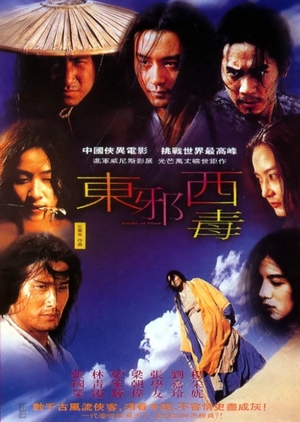
My feelings about this film are best summed up in this grammatically questionable quote, taken from the internet: “It’s one of those films where your so close to walking out of it but yet something keeps you drawn to wonder why and what is the films point? Then in the end you go WOW!!!” AHSES OF TIME is a delirious epic from Hong Kong’s inimitable Wong Kar Wai, made the same year as his equally impressive CHUNKING EXPRESS. With a mammoth budget and an all-star cast that includes Tony Leung, Brigitte Lin and Maggie Cheung, this was apparently Wong’s attempt at selling out with a large-scale martial arts epic–although if that was indeed the intent then he failed big time. Imagine if Jean Luc Godard directed a Jackie Chan flick…or if DRAGON INN collided with LAST YEAR AT MARIENBAD. It’s filled with spectacular fight scenes, but the film is also incredibly (and sometimes agonizingly) arty, not to mention rapturously fascinating from start to finish, with eye-popping visuals courtesy of Wong’s stock cinematographer Christopher Doyle. The plot, such as it is, involves a guy who hangs out at a run-down hotel in the middle of a vast desert, where he recruits assassins for his lucrative murder-for-hire business. I can’t really tell you anything more, as the whole thing is so mired in dreams, hallucinations and flashbacks that I’ve never been able to entirely sort it out…and I’ve viewed it at least half a dozen times!
2. DANCE ME OUTSIDE
A Canadian import that was generally well received in its day but will doubtless be viewed as politically incorrect now. Why? Because, like the W.P. Kinsella book it was adapted from, it’s about Native American—or, as they’re known in Canada, First Nations—peoples but was created by white man. Yes, director Bruce McDonald, co-writer Don McKellar and executive producer Norman Jewison are all pale faces, thus making DANCE ME OUTSIDE a textbook example of cultural appropriation. I nonetheless insist upon calling it one of the finest films of its type (better, I feel, than the similarly themed SMOKE SIGNALS), with a breezy rock ‘n’ roll aesthetic that doesn’t ignore the dark realities of reservation life. The young cast, which includes Ryan Rajendra Black, Jennifer Podemski and future Hollywood mainstay Adam Beach, is uniformly endearing, and the situations they find themselves confronting, which include an interracial marriage, intrusive white authority figures and a murder, are depicted in a gritty yet unassuming manner that showcases McDonald’s enormous sense of humanity in addition to his funny side. See also THE REZ, the TV series that was spun off from this film.
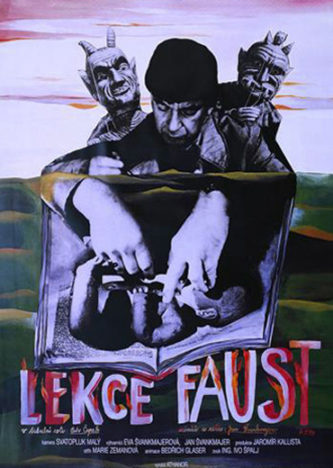 1. FAUST (LESSON FAUST)
1. FAUST (LESSON FAUST)
The second, and quite possibly best, feature by Czech animator/filmmaker Jan Svankmajer. As in his 1988 debut feature ALICE (based on ALICE IN WONDERLAND), here Svankmajer takes a classic story and puts his own totally individual spin on it. This isn’t so much an adaptation of the legend of Dr. Faust and his dealings with the Devil (although it uses dialogue from both Goethe’s and Christopher Marlowe’s versions of the story) as it is a 97 minute dream inspired by it. Thus, when Faust faces down Satan, he’s manipulated by unseen puppeteers. The Devil’s messenger Mephistopheles is portrayed as a roiling ball of clay that transforms into a replica of the main character’s face. Life-sized marionettes lure pedestrians into the Devil’s realm while bums nonchalantly carry around severed body parts and eggs are found in loaves of bread. It all adds up to an astonishing barrage of surrealism that ranks with the best work of Bunuel, Dali, Lynch and just about anyone else you can think of, but ranks as pure Svankmajer through and through.
